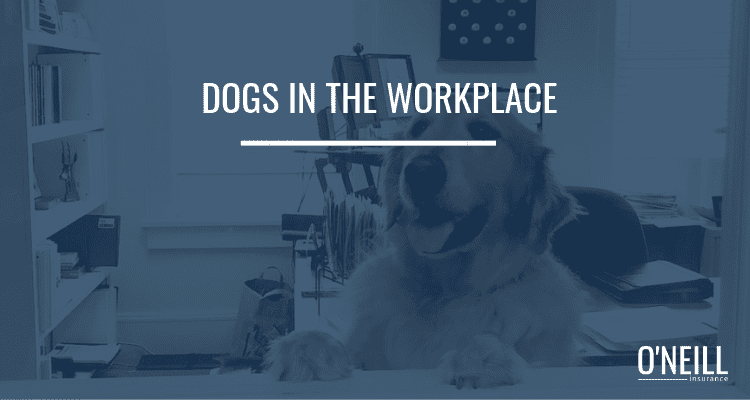
According to the Society for Human Resource Management, approximately 9 percent of U.S. employers allow their employees to bring their dogs to work every day.
With this trend on the rise, many employers are wondering if allowing dogs into their workplace is right for them.
Here’s the top benefits of allowing dogs in the workplace.
Many of the benefits surrounding allowing dogs in the workplace are related to employee engagement and retention.
In a time where the labor market is so tight and employers are trying to recruit and retain the best and the brightest, making your office pet friendly may be something to consider.
According to a study conducted by the Opinion Research Corporation, 37% of employees would sacrifice their vacation time or take a cut in pay to bring their pet to work.
Moreover, 44% of the survey respondents said they would consider leaving their current employer for one who offered a dog-friendly workplace, and 22% said they would be more productive with a dog in the office.
Similarly, research published in the International Journal of Environmental Research and Public Health reveals that the presence of dogs in an office can provide social support to employees, help improve their performance, decrease their stress and increase their social interactions and well-being.
…but here’s the downside to dogs in the workplace.
Despite the many benefits of making your office dog friendly, there are some things to consider.
Some employees may be allergic to or afraid of dogs and if you make your office dog friendly, those employees may be negatively affected.
In some cases, some employees may even consider leaving your company for one that is not dog friendly.
Additionally, some dogs may not be well suited to spend a full workday in the office, which could result in negative ramifications.
For example, allowing dogs in your office opens up to the risk of a dog biting an employee or fighting with another dog. Or, a dog may bark and whine loudly, get into a garbage, chew through electrical cords or even make a mess, disrupting your employees.
These are just a handful of the potential downsides you need to consider before deciding whether or not your organization will allow dogs in the workplace.
Steps to Take Before Making Your Workplace Dog Friendly
Before you open your doors to employees’ dogs, there are a few steps you need to take to ensure that it’s the right decision for your company and its employees.
- Gauge employee interest. There will likely be a small handful of employees who would love to bring their dog to work every day, but if they’re the minority of the employee population who is in favor of the change, it might not be the best decision to implement a dog-friendly policy. Gathering employee interest and thoughts on the idea will also help you identify if the presence of dogs in the workplace would create hardships on certain employees, allowing you to think about alternative solutions for these employees, if necessary.
- Talk to your property owner. Some building owners don’t allow pets to enter the building. Be sure to check with your property owner to make sure you’re allowed to open your doors to animals before rolling out a dog-friendly workplace initiative.
- Create a policy. You need to carefully consider the details of your organization’s dog-friendly initiative before rolling it out. Things to think about include how often employees can bring their dogs to work, how many dogs an employee can bring to work, where the dogs will stay during the workday and how employees with allergies or fear of dogs can be accommodated. Your dog-friendly workplace policy should also outline behavior expectations and consequences if these expectations aren’t met. For example, your policy can dictate what happens if a dog bites an employee or another dog. It can also outline how employees can go about anonymously reporting distracting dogs. Having a policy in place protects you, your employees and their dogs and leaves no room for misinterpretation. Consult a legal professional for assistance with drafting such a policy.
- Evaluate if your space is dog friendly. Is your office on the top floor of a high-rise building? Are there a lot of exposed cords? Is there a space for owners to exercise their dog? If you need to simply pet-proof your office, your space is most likely a good candidate for dogs. However, if your office is on the top floor of a tall building it will be difficult for owners to take their dogs out to use the bathroom.
These are just a few questions you need to ask yourself before allowing your employees to bring their dog to work.
Components of this article were adapted from Zywave. This is not intended to be exhaustive nor should any discussion or opinions be construed as legal advice. Readers should contact legal counsel or an insurance professional for appropriate advice.

